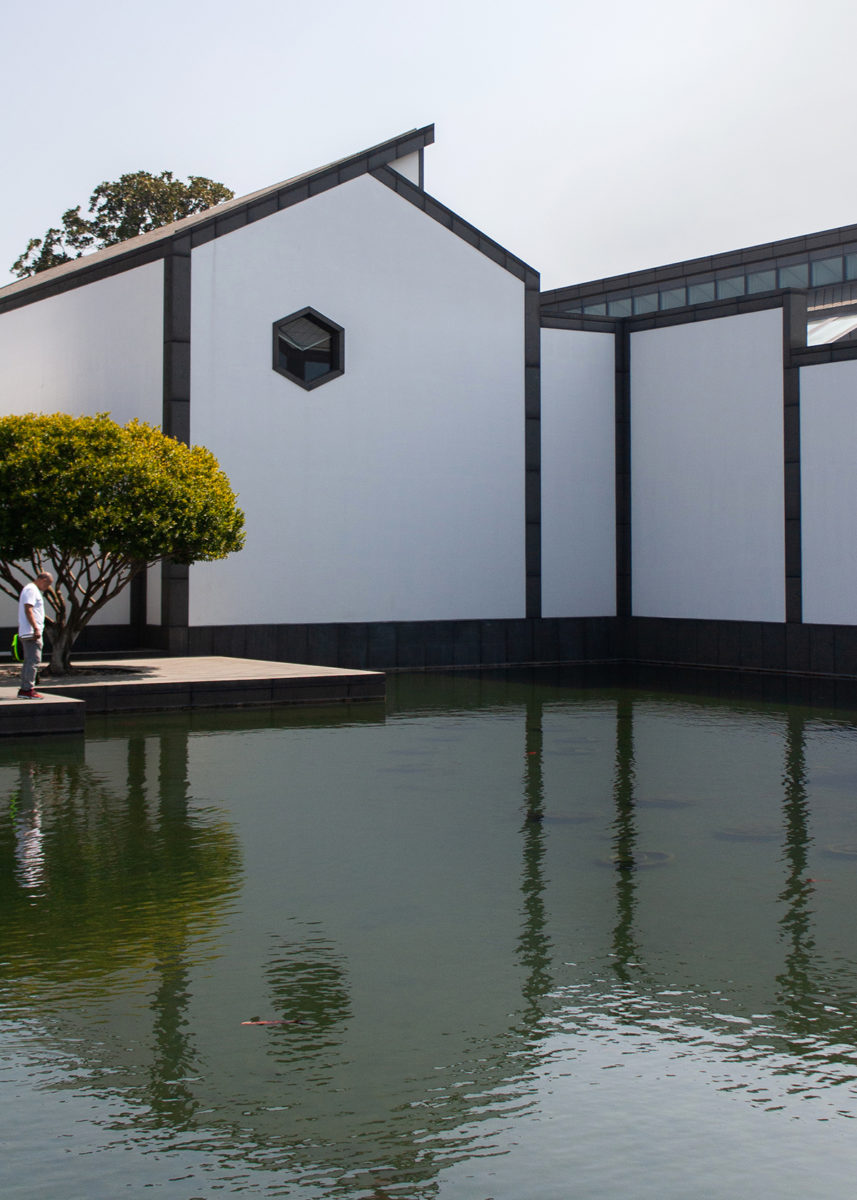There are certain places—show-stopping hotels, award-winning restaurants, local dive bars, or incomparable vintage shops—that are worth planning your whole trip around. The Suzhou Museum in the Jiangsu Province of China is one of those places.
The Suzhou Museum is rare among the world’s museums because the building itself—not the collection—is the attraction. It was designed by I.M. Pei, a Suzhou native and the architect behind the glass pyramid at the Louvre, which has become as famous as the Louvre itself—even a symbol for the whole of Paris.
So the Suzhou Museum is to Suzhou.
In a bustling city 60 miles northwest of Shanghai, the museum is located in one of Suzhou’s historic districts. The anchor of the site is a central pool bisected by a concrete walkway that connects a bamboo forest and a pagoda on one side to a miniature stone mountain range and a pavilion of topiaries on the other. From the inside, visitors can see the pool no matter where they are through octagonal, porthole-esque windows. Daylight, too, is carefully consumed, through windows with wooden screens, glass railings, and fountains. The darkest area of the museum, which houses the most precious and light-sensitive artifacts, has benches installed in front of large, low-set windows that look out on the light-diffusing bamboo forest.
All that’s to say this is one serene museum. Even as the hallways and exhibition rooms pulse with visitors, the effect is akin to the ancient gardens of Suzhou. The museum is a sanctuary; a refuge from the demands of everyday life; a site for contemplation.
Why it’s worth the trip:
Beyond its obvious merits as a piece of modern architecture, the Suzhou Museum’s design impresses because it engages and understands the traditional aesthetics of Suzhou. The black and white palette mimics the traditional Jiangnan style of all the surrounding original buildings; his measured use of plants, water, and stone nods to classical garden landscaping. Pei was a native of Suzhou, and it shows.
You’ll like it here if:
You’re seeking the quiet and contemplative amidst the hustle and bustle of modern China.
Price breakdown:
Entrance is free. Tours can be booked in advance, in English or Mandarin, for 200 RMB (about $30 USD).
The crowd:
Locals (class trips!), domestic tourists, and international travelers of all kinds.
Read why the W Suzhou is another local spot worth traveling for.
How to prepare:
Bring a camera, but don’t spend all your time looking through it.
Pro-tips:
A line is inevitable; go early to reduce your wait (if you get lucky, you’ll beat the line altogether). Like most of China’s cultural institutions, the Suzhou Museum is closed on Mondays.
While you’re in the area:
Next door you’ll find the Humble Administrator’s Garden, 13 acres of enchanting classical landscaping dating back to 1150. If you’re keen to experience another facet of the Chinese design sensibility, don’t miss it. Pingjiang Road, one of the most picturesque streets in Suzhou, is also less than 15 minutes away on foot. There, ride a gondola, snack on street food, and peruse porcelain wares.














